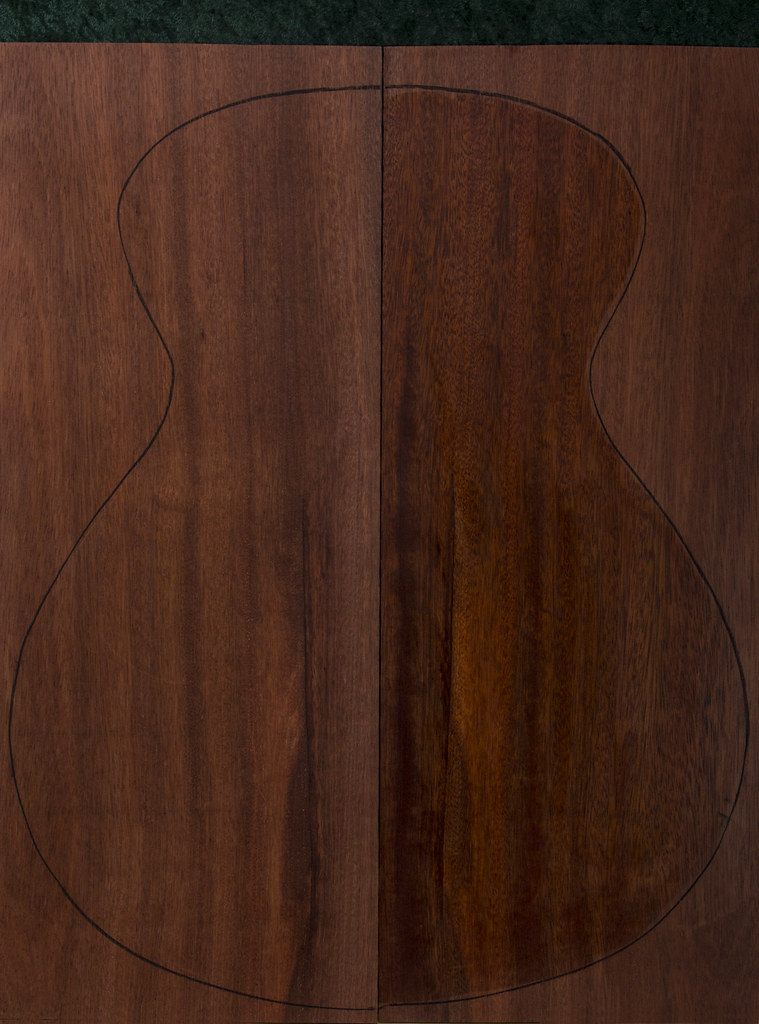I am making a spec Greta GA Bloodwood and Swiss Moon Spruce guitar in this build thread:

While building this instrument I want to showcase some of the available contemporary hand tools I am using in my studio. I want to demonstrate the value that hand tools bring to building a higher quality guitar. Hand tools are often shown as the traditional old romantic way of building. I'm not selling romance here I want to show the quality and accuracy that hand tools bring.
specs:
Back and sides: Bloodwood
Top: Master Grade Swiss "Moon" Alpine Spruce
Neck: One Piece Honduran Mahogany (35yrs Seasoned)
Fretboard: Black Ebony
Trim and Art Deco Inlays: Black Ebony, Bloodwood, Black Mother-of-Pearl
Purfling: Black Wood, Maple, Bloodwood
Florentine cutaway
Arm Bevel
Large Open Headstock
Black Schertler Tuners
Black Buffalo Horn Custom Tuner Buttons
Nut and Saddle: Bone
Nut Width 1 3/4"
Saddle String Space 2 1/4"
Finish: Catalyst Urethane
Red to Black Neck Sunset Burst
Here is the Bloodwood back and sides set:

Here is the back with one wet side:

I selected a set with a little figure and a lot of tap tone and sustain. Bloodwood is harder, stiffer, and heavier that Black Ebony and unlike Black Ebony it rings like glass. It is a very resonate wood with eternal sustain. You don't see it on guitars much because its hard to work with and bend.
Here I am using a #62 Lie-Nielsen low angle jack plane on a shooting board to prepare the Bloodwood sides for joining. Planned wood glue joint is much stronger than a sanded wood glue joint for this long thin joint down the center of the guitar back:

It is arguable that Lie-Nielsen is the single most influential company leading to the resurgence of hand tools that is occurring today. They have taken many of the classic hand tool designs (especially Stanley hand planes) and have updated them with currently available materials, accuracy of manufacture, and design improvements.
The advantage of a low-angle plane is the blade bevel is on top. Which means if you have, say a highly figured piece of wood, you can optimize the blade cut angle to eliminate tear out by simply changing the blades bevel angle. It doesn't work like that with a high angle plane.
Another feature available for this plane is the add on "Hot Dog" handle that adds better grip and control so you can achieve a perfect shooting board cut.
OK so we're off. I want to add one more thing here on this first post. I am not trying to sell anything but my guitars here. I have no agreements with any tool makers. I researched and bought these tools like anybody else can.
My only endorsement for any of these tools is my opinion that so far they were the best I could find and afford for what I do and how I do it.
Thanks for Viewing!
Mark